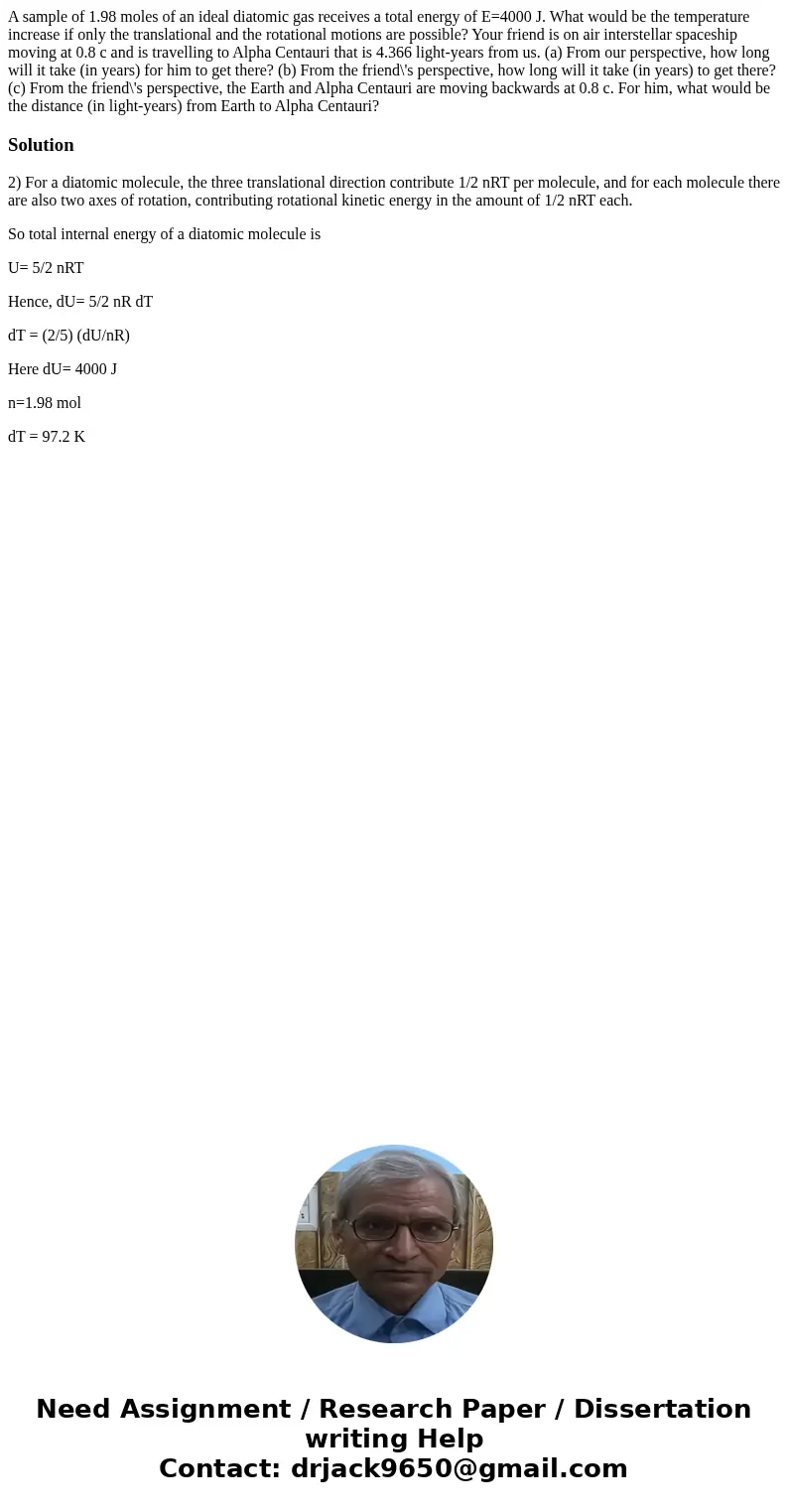A sample of 198 moles of an ideal diatomic gas receives a to
A sample of 1.98 moles of an ideal diatomic gas receives a total energy of E=4000 J. What would be the temperature increase if only the translational and the rotational motions are possible? Your friend is on air interstellar spaceship moving at 0.8 c and is travelling to Alpha Centauri that is 4.366 light-years from us. (a) From our perspective, how long will it take (in years) for him to get there? (b) From the friend\'s perspective, how long will it take (in years) to get there? (c) From the friend\'s perspective, the Earth and Alpha Centauri are moving backwards at 0.8 c. For him, what would be the distance (in light-years) from Earth to Alpha Centauri?
Solution
2) For a diatomic molecule, the three translational direction contribute 1/2 nRT per molecule, and for each molecule there are also two axes of rotation, contributing rotational kinetic energy in the amount of 1/2 nRT each.
So total internal energy of a diatomic molecule is
U= 5/2 nRT
Hence, dU= 5/2 nR dT
dT = (2/5) (dU/nR)
Here dU= 4000 J
n=1.98 mol
dT = 97.2 K

 Homework Sourse
Homework Sourse